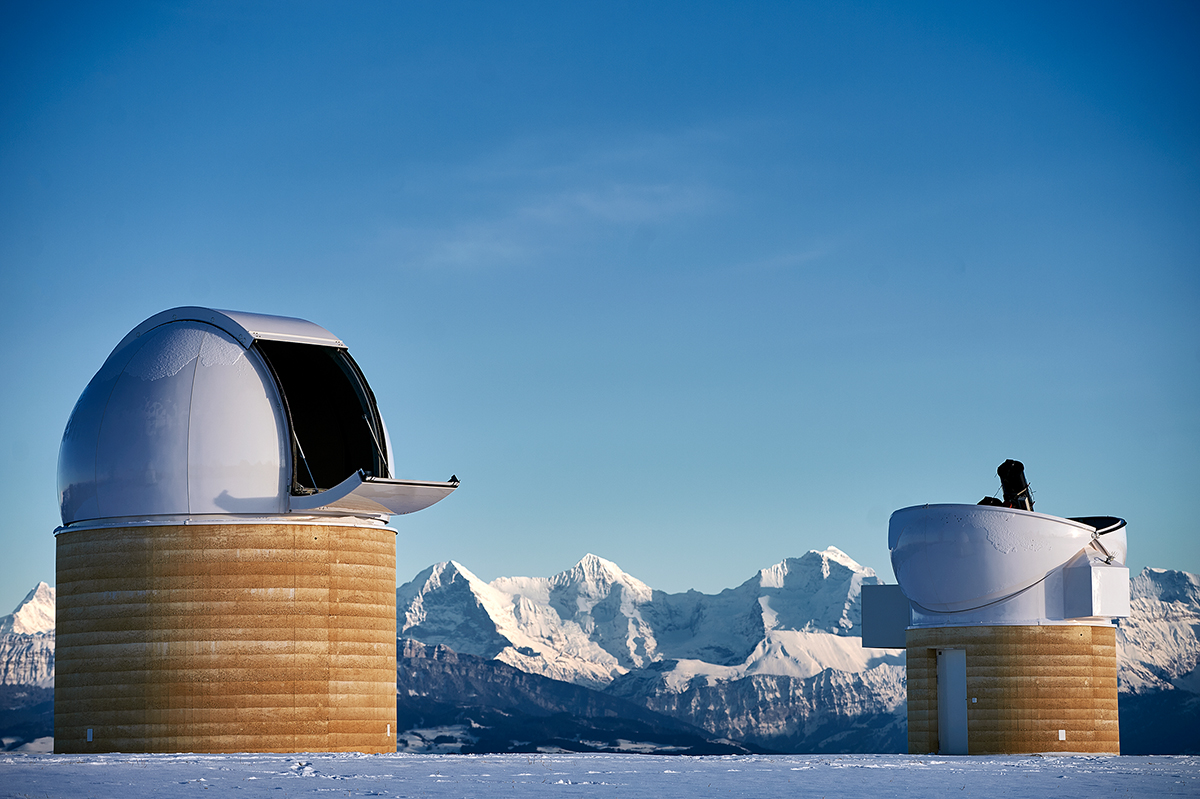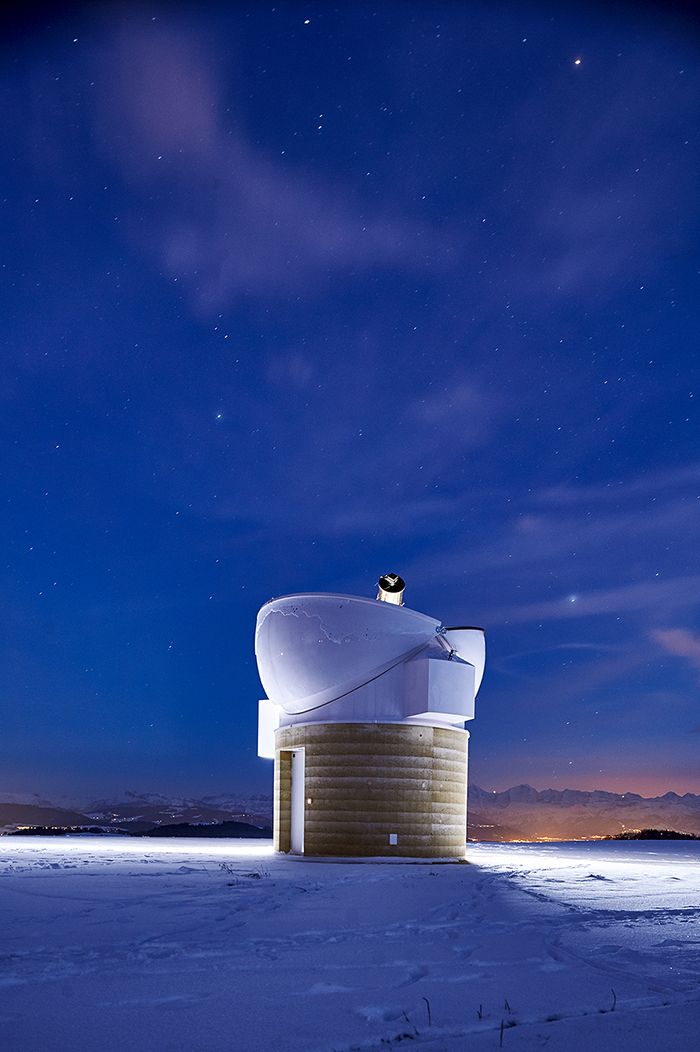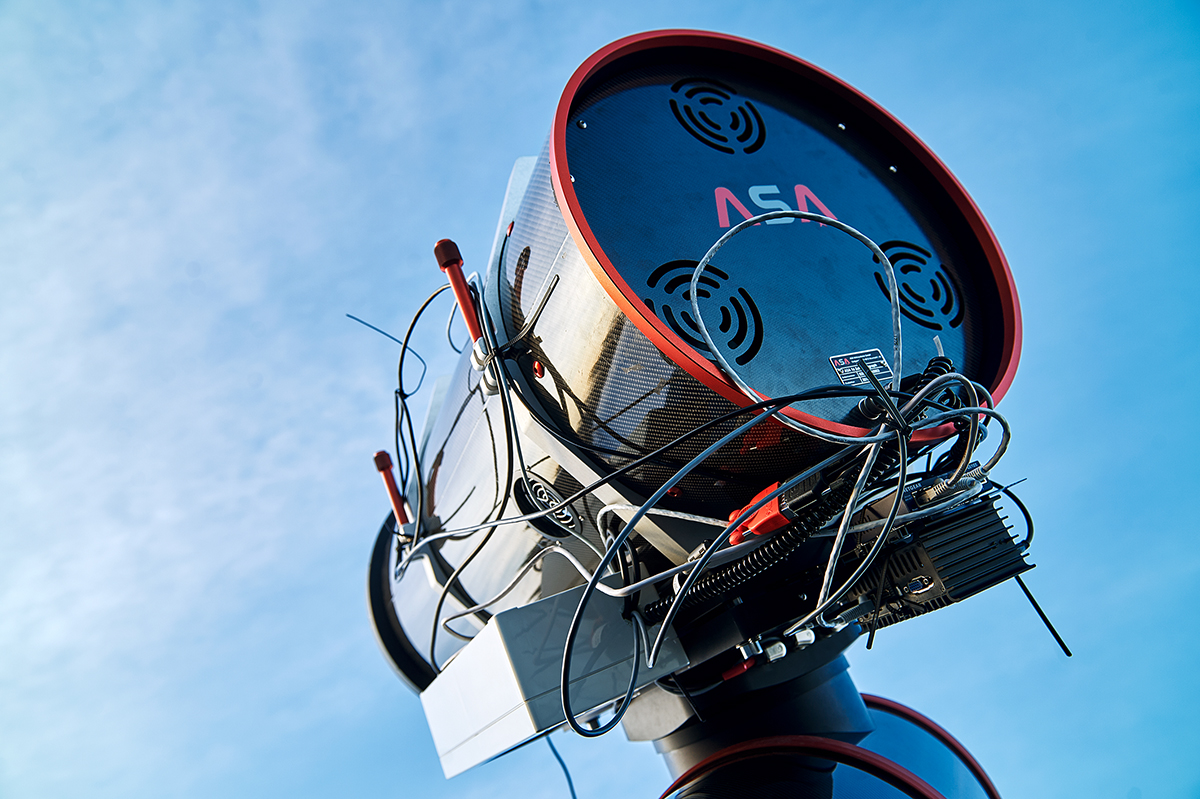Focus on space debris
The Astronomical Institute of the University of Bern (AIUB) has extended its observatory in Zimmerwald with two additional domed structures, and has renovated a dome. As a result, there are now six fully automated telescopes available for observation and specifically for detecting and cataloguing space debris. The research station is thus gaining even greater international significance under the name "Swiss Optical Ground Station and Geodynamics Observatory".
On the afternoon of 10 February 2009, the operational communications satellite Iridium 33 collided with the obsolete Cosmos 2251 communications satellite over Siberia at an altitude of roughly 800 kilometres. The collision happened at a speed of 11 kilometres per second and produced a cloud of more than 2,000 pieces of debris larger than ten centimetres. This debris spread out over an extensive area within a few months, and has been threatening to collide with other operational satellites since then. "This incident was the ultimate wake-up call for all satellite operators but also for politics," says Thomas Schildknecht, Director of the Zimmerwald Observatory. The problem of space debris, obsolete artificial objects in space, took on a new dimension. Experts and space agencies have already been dealing with this problem for nearly 50 years. Researchers at the University of Bern supply scientific and empirical bases for models and measures to stabilise the number of objects, to make the safe and sustainable use of space possible in the future too.
Findings thanks to highly complex measurements
Complex observations using ground-based radar systems and optical telescopes are necessary for a better understanding of the current space debris population. Larger objects can be regularly followed and their orbits can be determined using these kinds of measurements. The orbits of roughly 20,000 objects, at altitudes from 300 to 40,000 kilometres, are known today. For pieces smaller than roughly ten centimetres, only statistical information is possible. The measurements indicate a total of approximately 700,000 debris objects between one and ten centimetres in size. "The pieces may be small but they are definitely still dangerous: a collision with a one centimetre diameter piece, for example, will release the energy of an exploding hand grenade," says Schildknecht.
Scientists at the Astronomical Institute of the University of Bern (AIUB) are looking for these kinds of small space debris pieces orbiting Earth in high altitudes using telescopes at the observatory in Zimmerwald near Bern, called the "Swiss Optical Ground Station and Geodynamics Observatory", as well as with a European Space Agency (ESA) telescope on Spain’s Tenerife. In addition to the navigation satellites’ orbit regions (at roughly 20,000 km altitude), the "geostationary ring" region at an altitude of 36,000 kilometres is also being explored in greater detail. In this region, the satellites seem to stay "fixed" with respect to Earth, and can therefore always observe the same section of the Earth’s surface (weather satellites) or emit signals to the same region (communication satellites). The geostationary region is heavily utilised and is therefore already densely populated which increases the risk of collision even more. The space is therefore limited which may lead to conflicts between satellite operators and even states.
Pollution of near-Earth space increasing
Researchers at AIUB have identified countless pieces of debris over the last 20 years with the help of these measurements, including a new, unexpected population of very light objects. Closer analysis of these individual objects concludes that they are debris from foils that were used for the satellites’ thermal insulation. These results make an important contribution to the models, which describe today’s space debris population and serve as the starting point for calculating future scenarios. The models all indicate a rapid increase in the space debris population over the next few decades. Several measures will be necessary to minimise this increase, for example preventing collisions (using avoidance manoeuvres), removing objects from the critical regions at the end of their mission (for example, by letting them burn up in the Earth’s atmosphere), and possibly actively removing old, obsolete satellites and upper rocket stages with the help of a clearing-up robot.
The new telescopes at Zimmerwald Observatory
The two recently built domed structures and the renovation of the existing six-metre dome have made it possible to install three new telescopes of the latest generation to research and observe the space debris population. One of these instruments with two, 40 cm, wide-field telescopes will allow for debris objects in the geostationary ring to be permanently observed to catalogue their orbits. The new 80 cm telescope meets the requirements to find small pieces of debris and determine their properties, and therefore their origin, using spectroscopic measurements. A telescope is being set up and tested in one of the two new domes in cooperation with the German Aerospace Center (DLR). This instrument is to be taken to Australia in autumn 2018 in order to establish a worldwide optical network together with an existing AIUB and DLR telescope in South Africa.
2018/05/18



